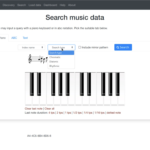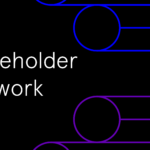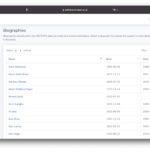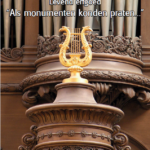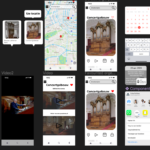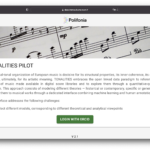Meetups
People and music: exploring their encounters over centuries
This pilot focuses on supporting music historians and teachers by providing a Web tool that enables the exploration and visualisation of encounters between people in the musical world in Europe from c.1800 to c.1945, relying on information extracted from public domain books such as biographies, memoirs and travel writing, and open-access databases. These encounters will be explored in a timeline and map interface and may reveal unexpected connections and relationships that cast new light on aspects of European music history. The tool will provide persistent, citable identifiers in order to support referencing in scholarship outputs.Recent News
Music libraries currently lack well-founded information retrieval tools. While it is relatively easy to find music based on metadata, content-based music retrieval still remains as a challenge. The Polifonia FACETS pilot aims to tackle this challenge by building a faceted search engine (FSE) for large collections of music documents.
Music libraries currently lack well-founded information retrieval tools. While it is relatively easy…
Are Dutch folk songs related to Irish folk songs? Melodies of European musical traditions are compared in Polifonia’s TUNES pilot with use of the latest technologies. Pilot leader Peter van Kranenburg explains this approach in our new video.
On Polifonia's YouTube channel, we publish a series of videos about the pilots and work packages. This…
The MEETUPS pilot focuses on supporting music historians and teachers by providing a Web tool that enables the exploration and visualisation of encounters between people in the musical world. A new demo video gives a sneak peak into the interface.
The MEETUPS pilot focuses on supporting music historians and teachers by providing a Web tool that…
Do you want to learn more about pipe organs, but can’t wait for the ORGANS Knowledge Graph to be ready? On Nationale Orgeldag (National Organ Day), organs can be viewed, played and heard throughout the Netherlands.
Do you want to learn more about pipe organs, but can't wait for the ORGANS Knowledge Graph to be ready?…
How can one easily explore the relationships between people and music from the 19th century? MEETUPS is building a web tool that will be of interest to music historians. Learn more about MEETUPS here:
On Polifonia's YouTube channel, we publish a series of videos about the pilots and work packages. This…
Unesco “City of Music” Bologna has an extraordinary musical heritage. This heritage is still unknown to many. Polifonia’s MUSICBO pilot aims to unlock this information. In our latest video, pilot leader Eleonora Marzi explains how.
On Polifonia's YouTube channel, we publish a series of videos about the pilots and work packages. This…
Music from our childhood stays with us forever. In CHILD, these tangible memories are captured and searchable in a knowledge graph. Learn more about this Polifonia pilot here:
On Polifonia's YouTube channel, we publish a series of videos about the pilots and work packages. This…
During the spring semester, first-year information and computer science students created a user interface to make data on pipe organs accessible to a wider audience. Polifonia is excited to report on this fruitful collaboration between our stakeholder Utrecht University (Frans Wiering) and the ORGANS pilot.
During the spring semester, first-year information and computer science students created a user interface…
TONALITIES is developing tools for the modal-tonal identification, exploration, and classification of monophonic and polyphonic notated music from the Renaissance to the twentieth century. The TONALITIES pilot just released its first demo, including a video that takes you through the interface step by step!
TONALITIES is developing tools for the modal-tonal identification, exploration, and classification of…
In order to answer research questions, musical heritage scholars need to combine diverse datasets ranging from music scores, audiovisual material to metadata. They need to identify similar entities and concepts implicitly present in the data, across different collections in different institutions. This process is currently mainly conducted manually, with the diverse results being rarely connected and shared in a way to be easily reused. To overcome the burden of this manual task, INTERLINK will focus on revealing and making compatible the entities and concepts hidden in digital music libraries and audiovisual archives. Pilot leader Jacopo de Berardinis tells in the latest video how they will do that with state-of-the-art methods for computational music analysis.
On Polifonia's YouTube channel, we publish a series of videos about the pilots and work packages. Last…
More Pilots
The history of pipe organs is rich and diverse, and highly interrelated to economic, religious and artistic contexts. Currently, the information about building practices and characteristics of ~2000 Dutch…
Bell structures are widespread both in urban and rural areas. They contribute to the distinctive shape of a landscape, defining its soundscape and playing as markers of daily, festive and ritual times.…
In order to answer research questions, musical heritage scholars need to combine diverse datasets ranging from music scores, audiovisual material to metadata. They need to identify similar entities…
Music libraries currently lacks well-founded information retrieval tools. While it is relatively easy to find music based on metadata, content-based music retrieval still remains as a challenge. The Facets…
Tonalities is developing tools for the modal-tonal identification, exploration, and classification of monophonic and polyphonic notated music from the Renaissance to the twentieth century. This pilot has…
The digital music collection of the Meertens Instituut (Amsterdam) includes thousands of melodies from Dutch popular culture, spanning a period of more than five centuries. To trace possible international…
In 2006 Bologna was declared by Unesco “City of Music”. Despite this, the extraordinary musical heritage of this city is kept in cultural institutions and archives, studied by a few specialized scholars…
This pilot will build a knowledge graph of the historical experience of music in childhood, using life writing (letters, diaries, memoirs, travel writing) and other historical texts as sources for adult…
Pilot summary The ACCESS Pilot will develop new ways to enhance participation and engagement in music: for the general public; for those with hearing impairments; and for those with physical disabilities.…
